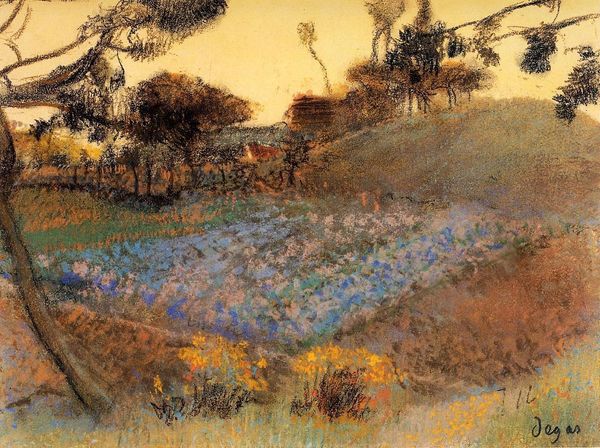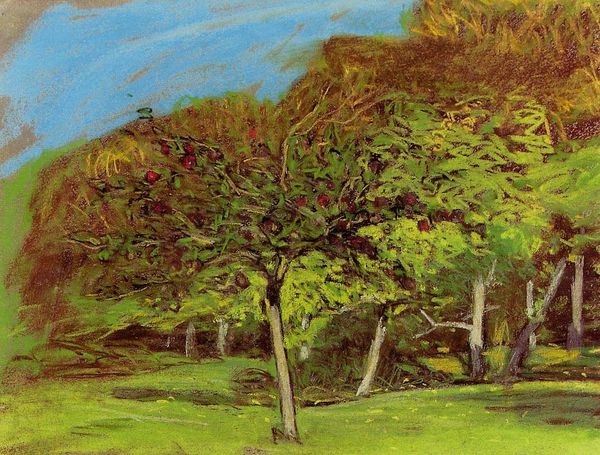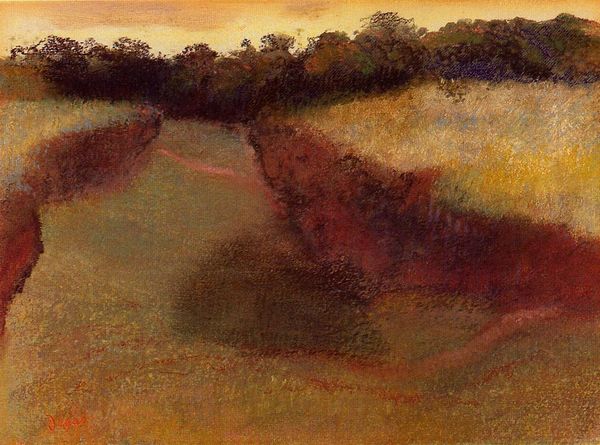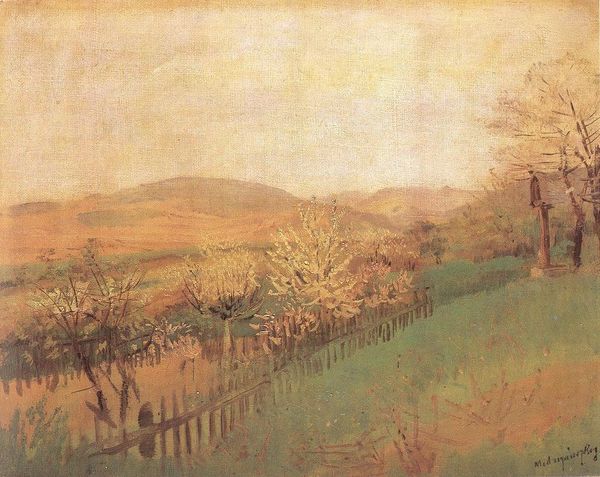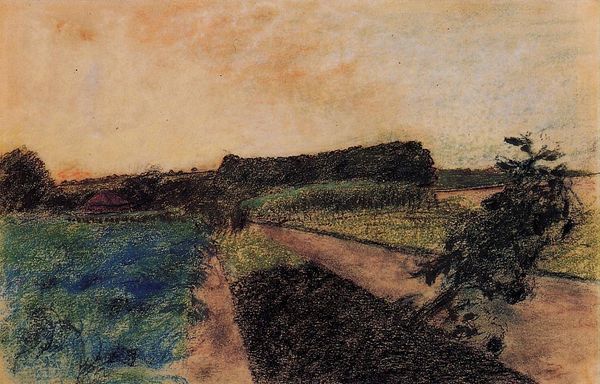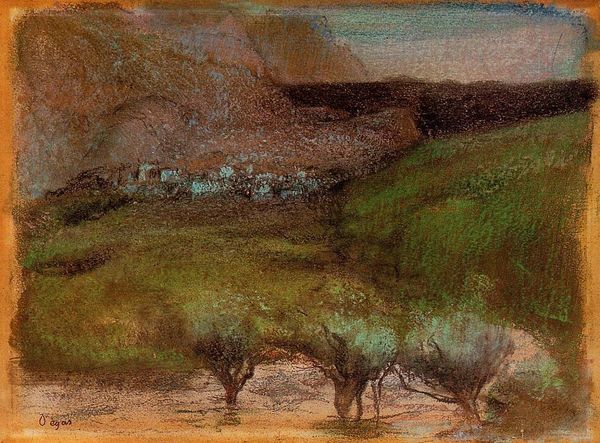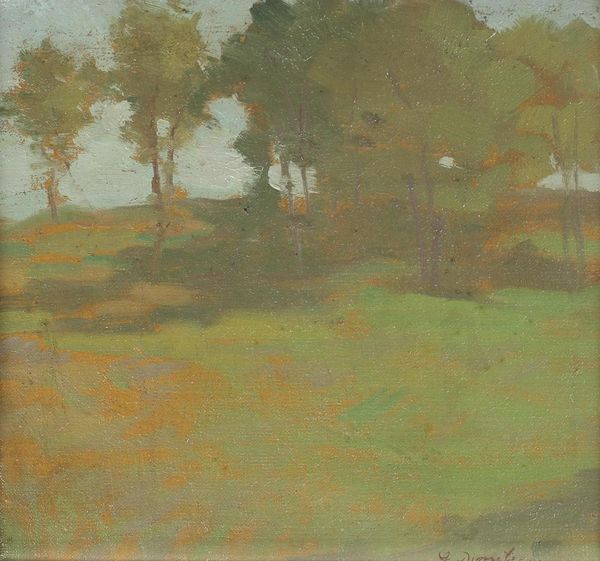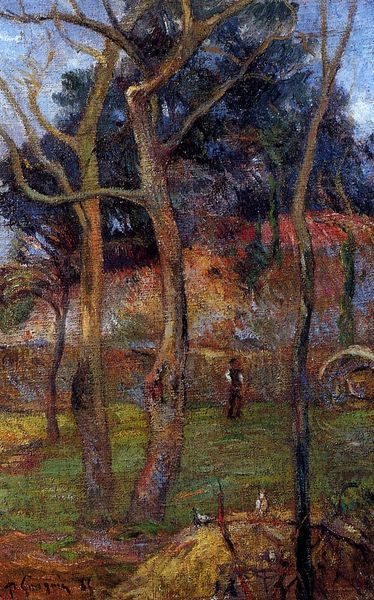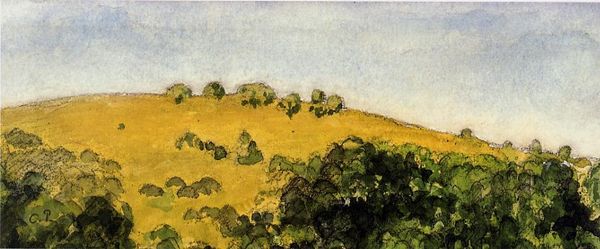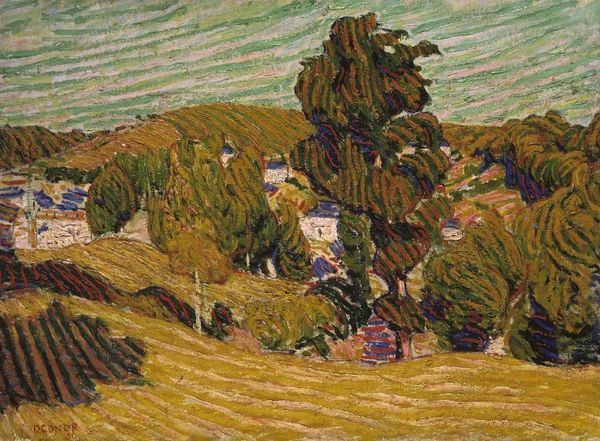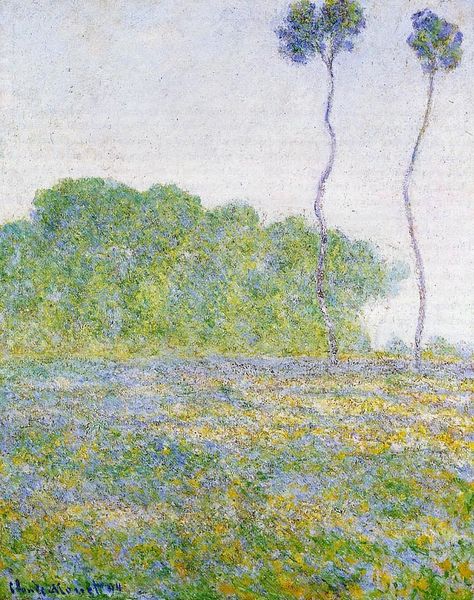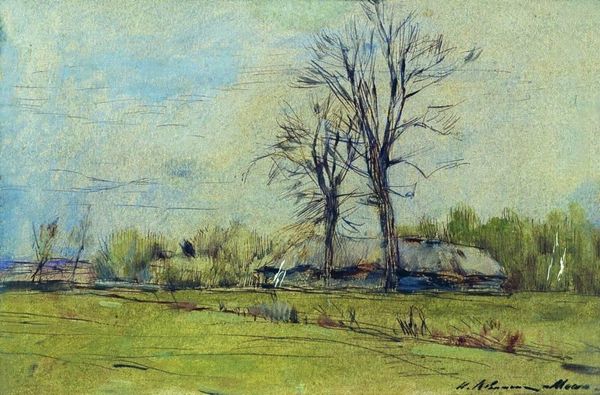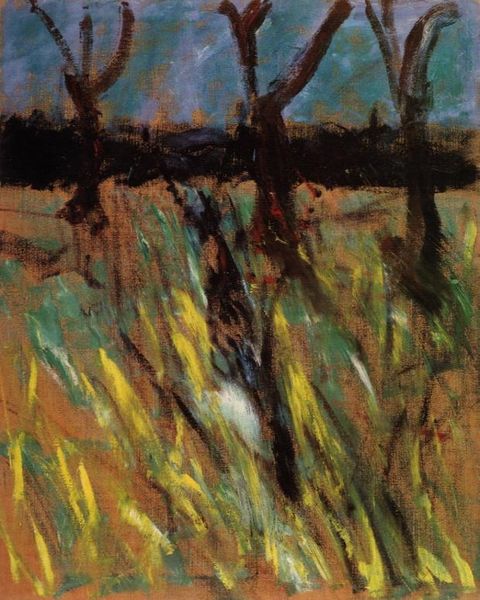
Copyright: Public domain
Edgar Degas' landscape with cows was created with pastel on paper. Pastels allowed Degas to work with color in a direct and immediate way. The powdery pigment is bound into a stick, and applied directly to the surface, building up layers of color. The landscape isn't about the view so much as it is about how Degas applied these layers. Look closely at the foreground; you can see how each stroke describes the form of the cows. The soft texture of the pastel creates a hazy atmosphere, blurring the distinction between the cows and the landscape, giving a sense of movement and change. Degas was part of a generation of artists interested in depicting modern life, and pastels were an ideal medium to capture the fleeting impressions of the everyday. He was fascinated by the ways in which industrialization was transforming French society. The mass production of pastels made color more accessible to artists, and the portability of the medium allowed them to work en plein air, capturing the changing light and atmosphere of the modern world. By considering these factors, we can understand how Degas' choice of materials and techniques contributed to the unique character of his art.
Comments
No comments
Be the first to comment and join the conversation on the ultimate creative platform.
